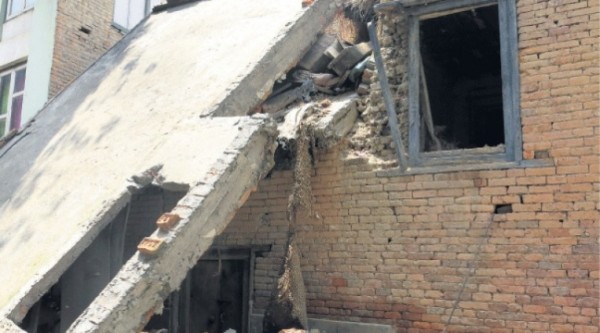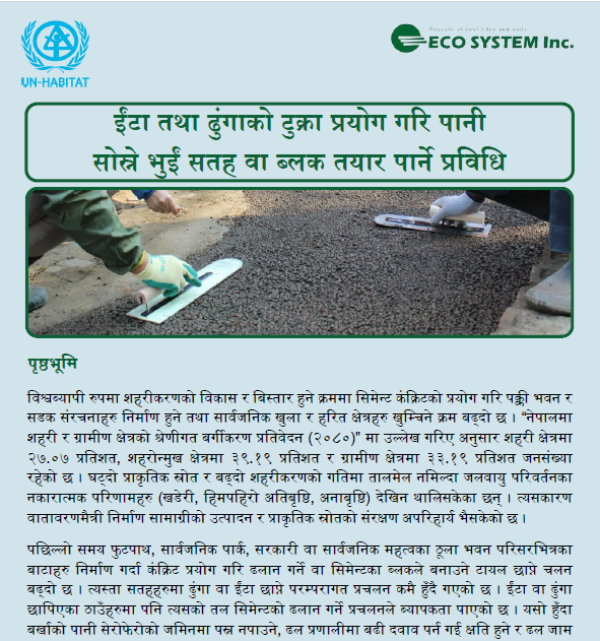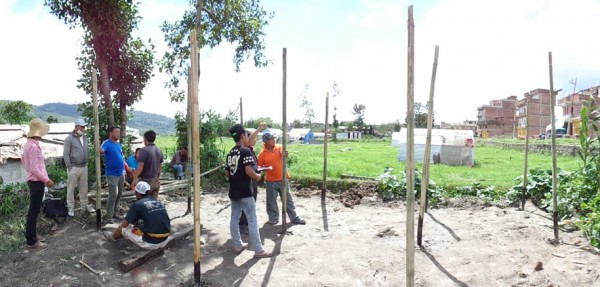All for safety

Dinesh Kharel | July 10 2015, Nirmala Shrestha, a resident of Kirtipur's Panga VDC, not only injured herself but also lost her beautiful home during the earthquake on April 2015. She is planning to construct an earthquake resistant home within the coming year. Nirmala, who has been going through quite a tough period in her life, strongly believes that her neighbors and the organization Panga Woman Cooperative (PWC) members are ready to construct earthquake resistant houses as long as the government provides some financial support.
When speaking to Nirmala and her fellow community members, all of them were quick to note that not a lot of support has been provided to Panga. They shared their frustrations arising from the hardships in raising children while living in small tents. The female members were also particularly concerned about their own wellbeing while living in open areas during this difficult period.Panga VDC has been hit hard by the earthquake. A total of 522 homes were destroyed while 11 people lost their lives. According to Menuka Maharjan, chairperson of PWC, till date 195 semi-permanent shelters have been constructed with help from the Government of Nepal, UN-Habitat and other stakeholders. Most of these shelters have mainly been provided to pregnant, single women, along with those who are sick and injured.Nirmala also got a temporary shelter made from metal and other local materials. She now has a private living space for herself and her family of five. "Finally I have a temporary house where I can live during the monsoon. I can store my harvest and other kitchenware. This temporary shelter was constructed using local materials including bamboo and we completed the construction within a few days. I want to thank the people involved for their support," she said with a smile.
Nevertheless, more than half of the affected population of Kritipur is still being forced to live in damaged homes because the temporary shelters aren't enough. With the hope that their coming generations do not have to face these harsh conditions, Nirmala and her colleagues stress the importance of constructing earthquake resistant homes in the future.
Kirtipur is not the only area affected by the earthquake. According to data and sources from the government, approximately 595,728 houses were destroyed and another 279,828 were damaged by the quakes across the country. Hundreds of thousands of people continue to remain in makeshift shelters, as more than 1,17,000 people were displaced. Many of the affected families are also still struggling to recover and rebuild their livelihoods.
It's estimated that around 43,500 households have still not received adequate supplies or, in some cases, have not even been reached yet. The government relief packages are yet to reach many remote earthquake-affected villages. In this situation NGOs, INGOs, other humanitarian support organizations and some youth representatives from various political parties are trying to get access to such villages to help the public build temporary shelters. This has been much appreciated by the local communities.
Many people are going to construct their new homes once this monsoon season is over. Earthquake affected district Dolakha, Sunkhani-2 inhabitant Bidur Sharma who is a teacher at a local school said, "We will begin our reconstruction after Tihar. We want to build an earthquake resistant building. However, there isn't any information center or technical manpower in our village. We need to visit Kathmandu in order to get the necessary information and ideas regarding earthquake safety measures, which is not practical."
To address the people's demand, the district development committee along with UN-Habitat and partners are going to establish an information center in Dolakha. "To build safer homes, it's vital to follow the National building code and as a teacher, I'm aware about this," said Sharma.
On the other hand in Kathmandu, more than 90 percent of the houses have been built without following the National Building Code. Majority of the housing units have been constructed by the people as per their own needs and budgets.
The National Building Code has been approved and implemented since 2003. The practice of applying building code has already been started in government as well as private buildings. However, this requires massive training as well as dissemination including public awareness programs. Also, the importance of the building codes should be stressed upon as the implementation and execution of it could play a significant role in designing earthquake resistant buildings.
Deputy Director General of Department of Urban Development and Building Construction Shivahari Sharma said, "Proper implementation of the National Building Code can be the vital key in reducing earthquake risks in Nepal. This is the right time to circulate the message and make people aware about the significance of the building codes." Till date, the building code has been implemented in thirty municipalities only.
Engineer Padma Sunder Joshi, Urban Planner and UN-Habitat Country program manager said, "Most of the Nepalis people made unsafe buildings. Therefore, we lost thousands of lives and lost properties worth billions of rupees. The unwillingness in implementing and following national building code is the major cause of the massive loss and damage in this devastating earthquake."
Ever since the 7.8 magnitude earthquake struck on April 25 this year, the country has faced numerous major aftershocks. Thousands of people still live in temporary shelters and the possibility of construction post the monsoon season is high. Generally during an earthquake approximately 80 percent of the losses are caused due to destruction of buildings. Therefore, it's important to follow the building codes and build safer building that can withstand earthquakes given the fact that we live in a seismically active zone.









